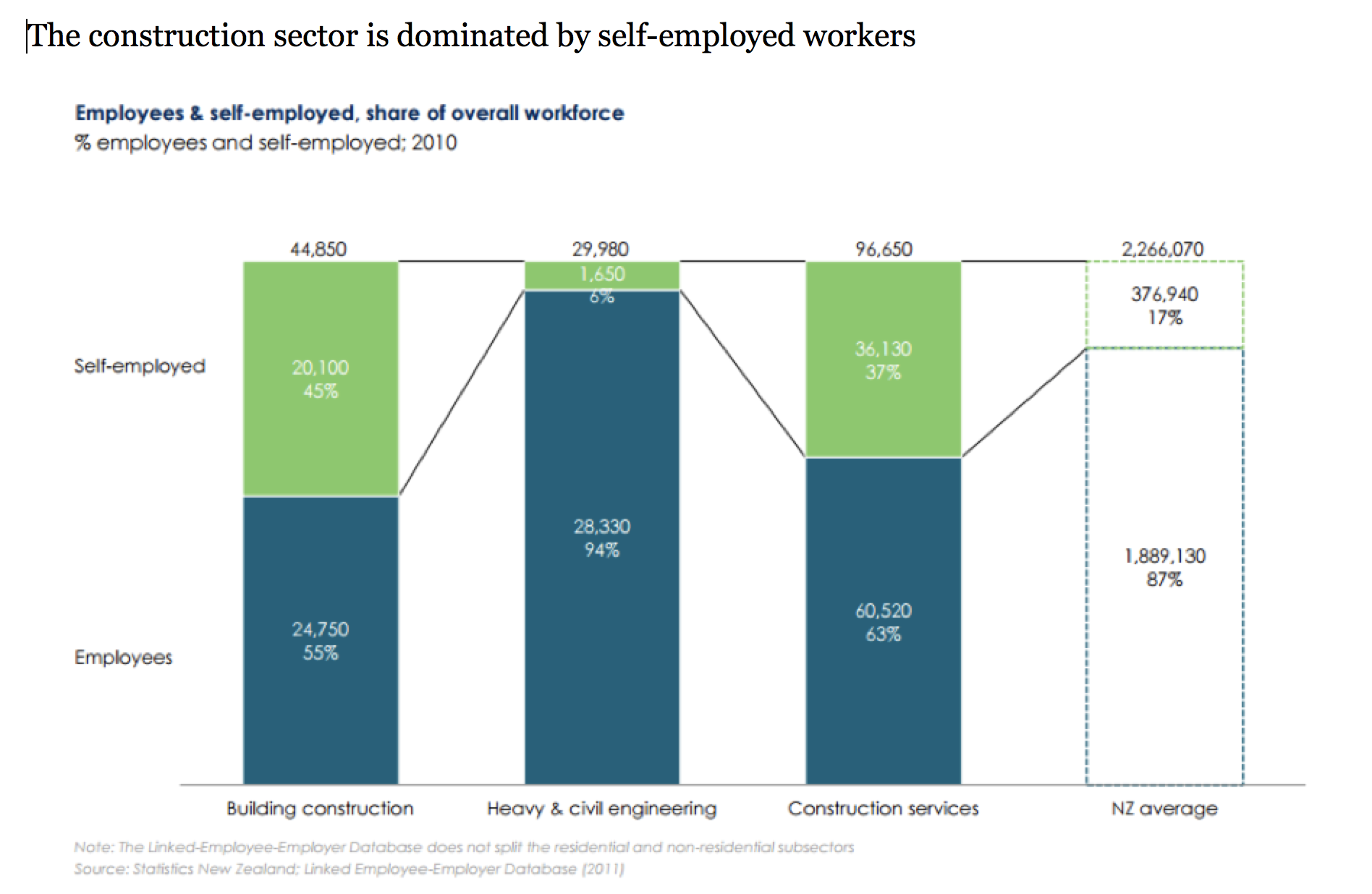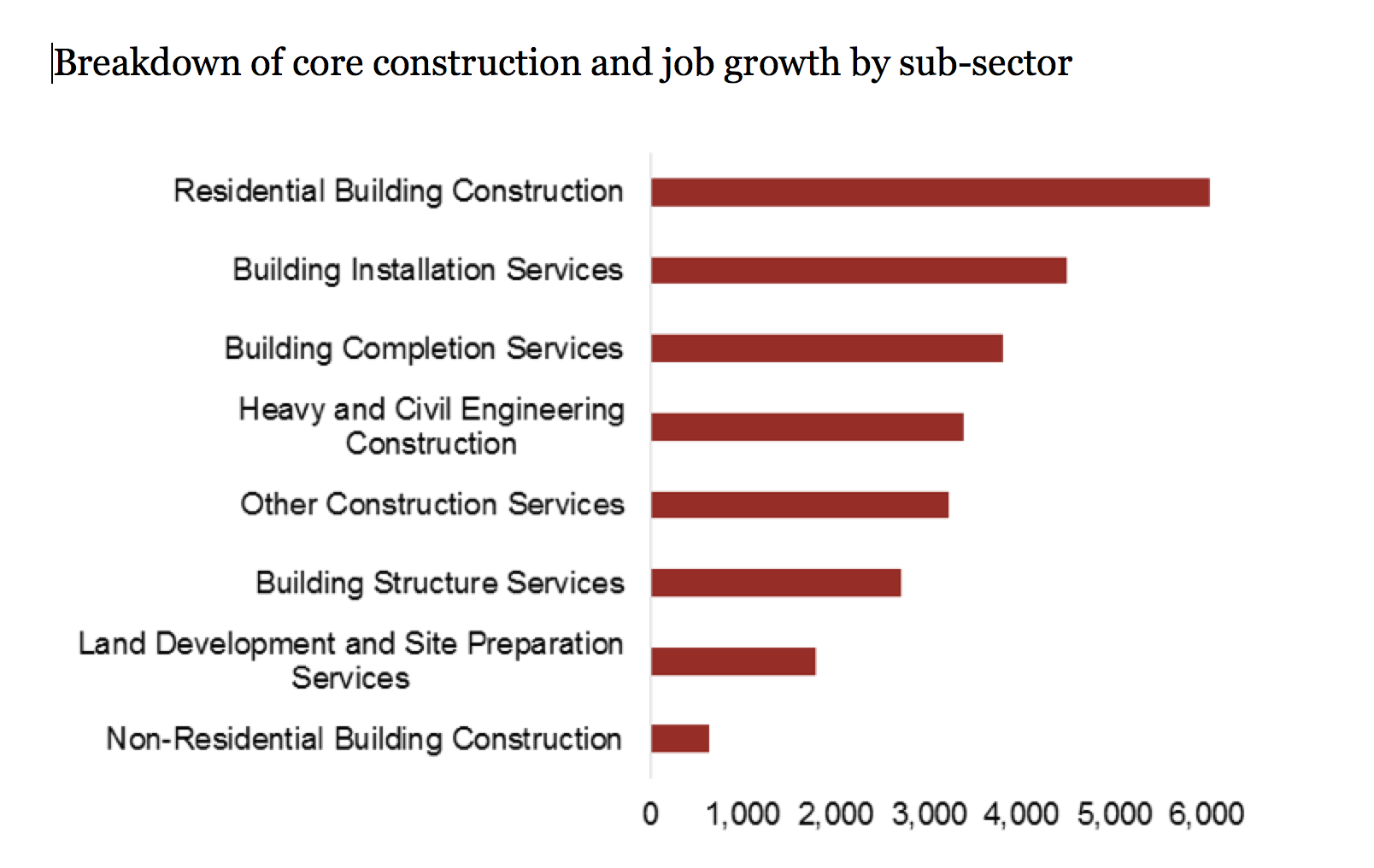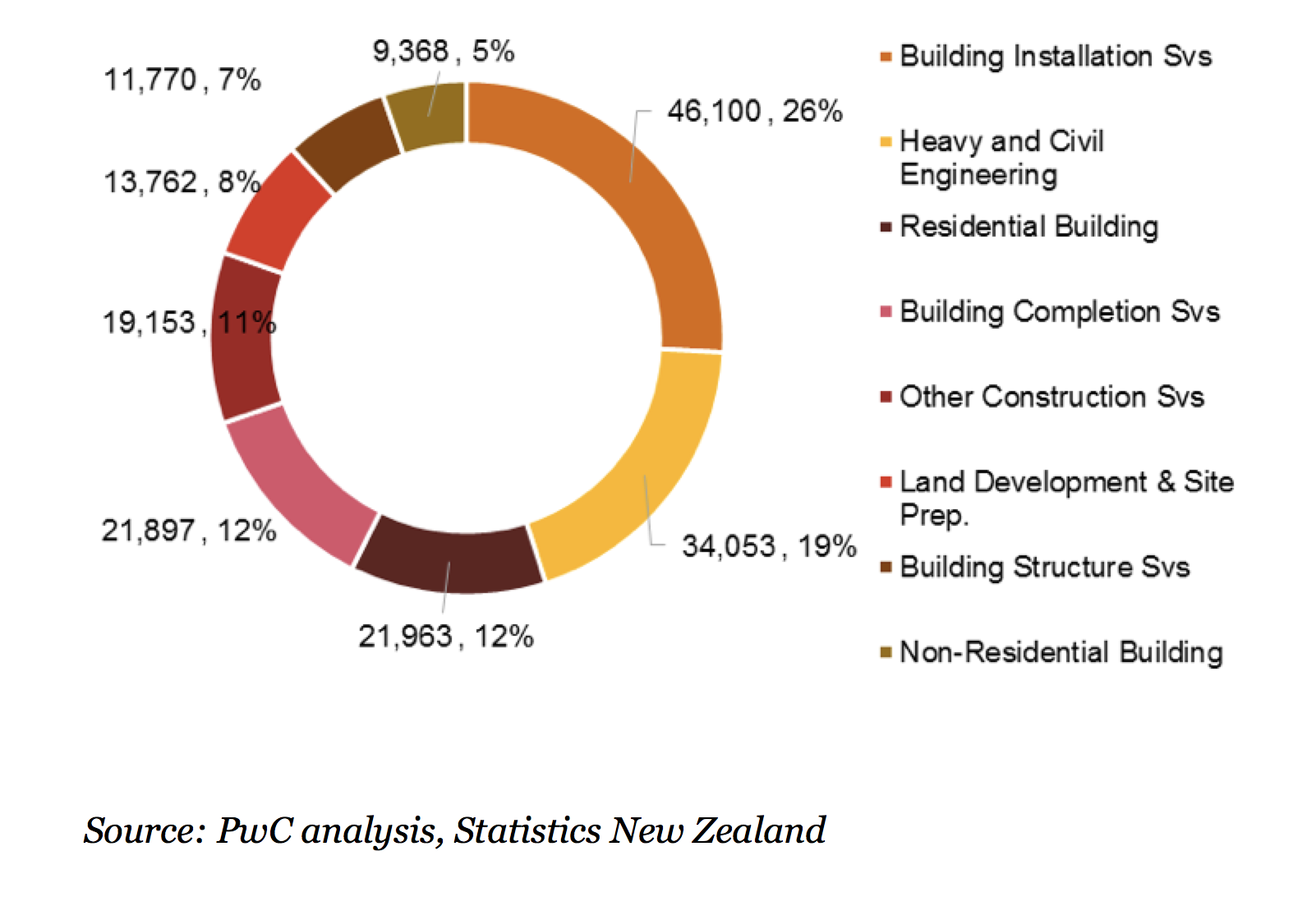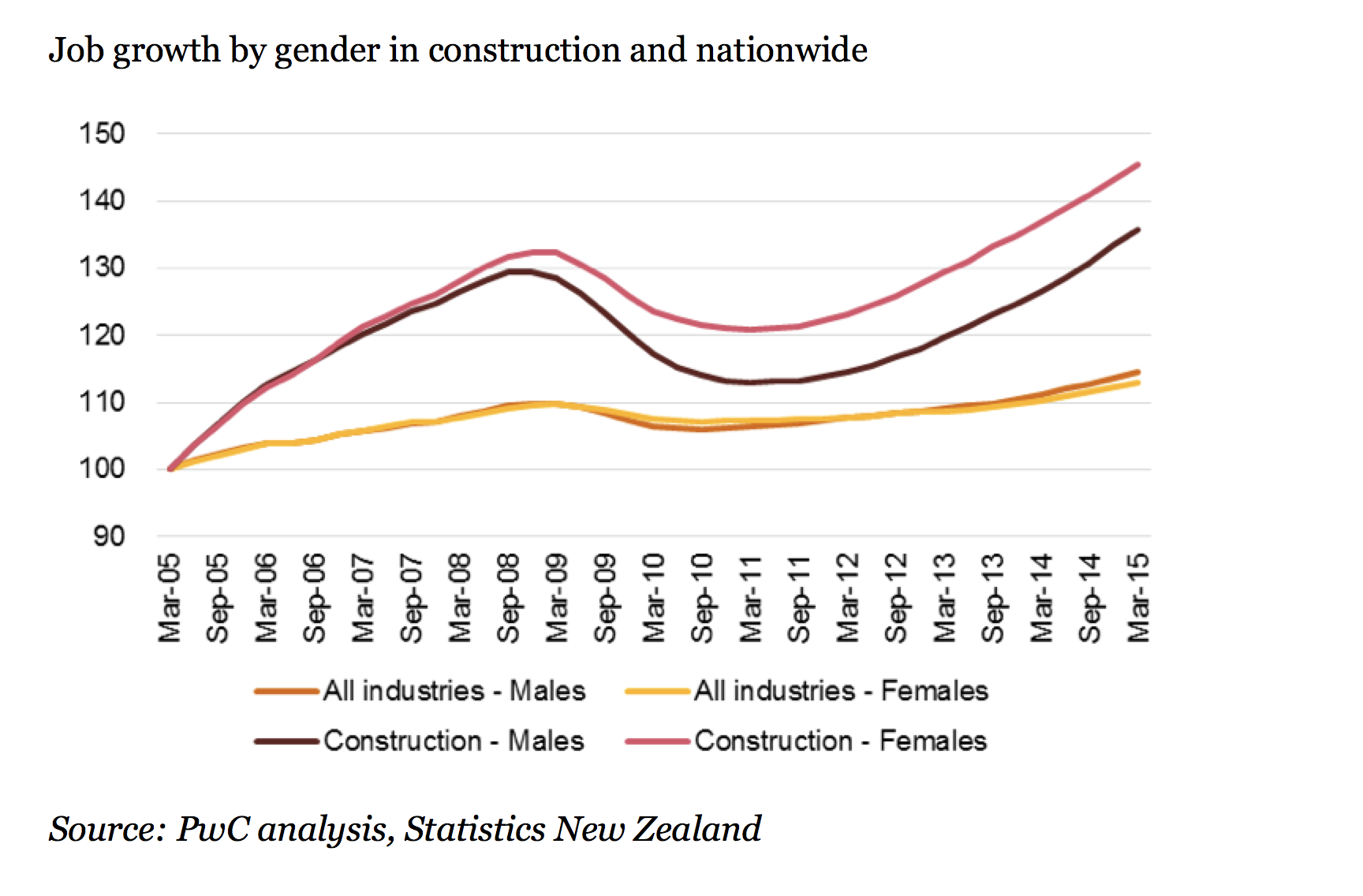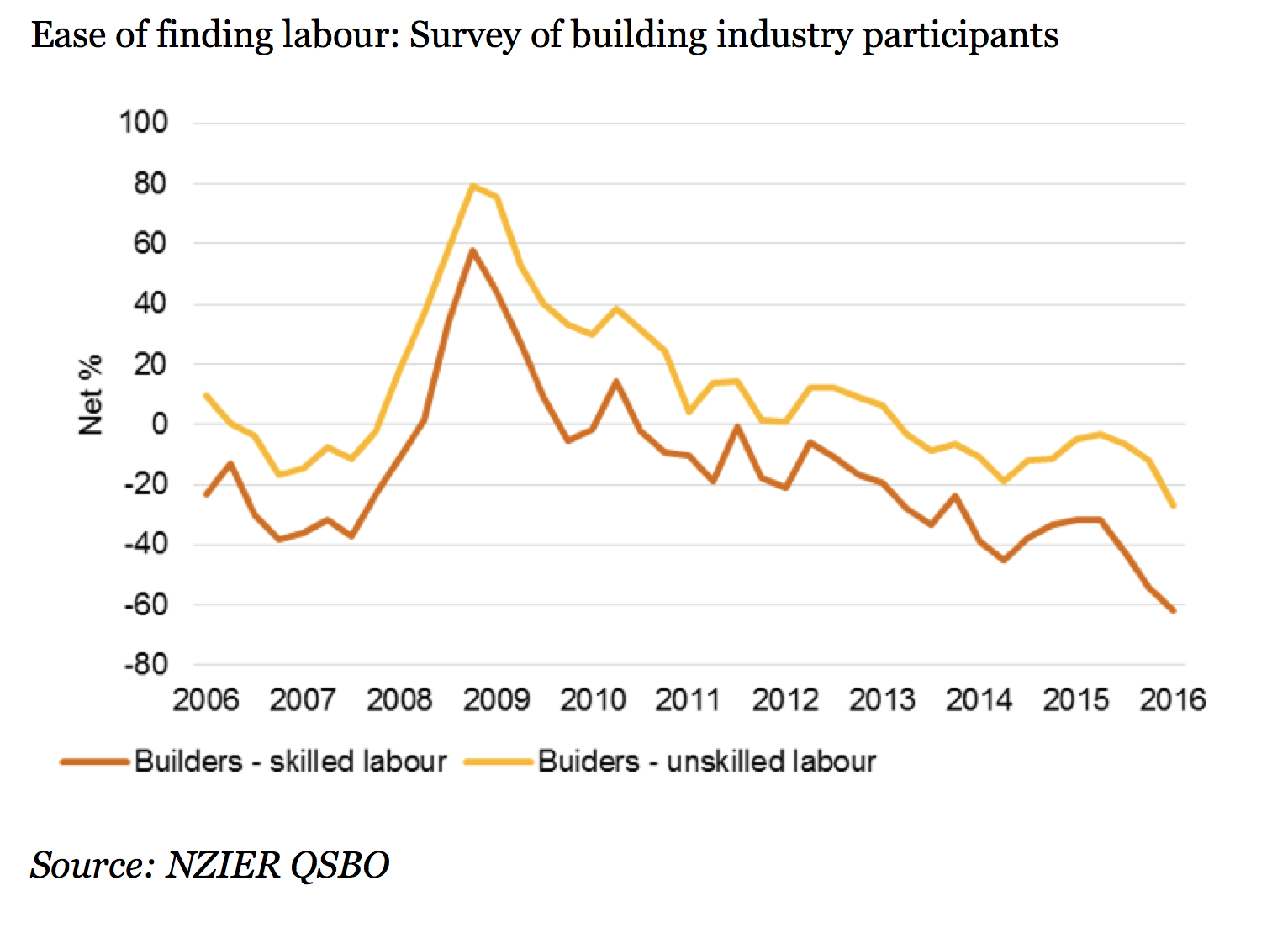Construction industry squeezed by growth
17 Nov 2016, Featured, Industry Updates

Despite strong growth in employee numbers over the past few years, the construction industry still faces a significant labour shortage, currently estimated by some sources to be around 17,000
While the construction industry’s ranks have been bolstered by strong employee growth in recent times, research shows a lot more is required to meet labour demands.
A recent PWC report titled Valuing the role of construction in the New Zealand economy shows that since 2012, the number of full-time employees in the construction industry has increased by 18%.
That figure includes 27,500 employees added in 2015 – the largest contribution by any industry to annual national employment growth that year.
However, the report says that labour demand in construction-related occupations is forecast to increase by 49,000 between 2015 and 2021.
Industry participants in the report highlighted labour shortages as a noticeable constraint on their businesses that impacts productivity.
The industry has struggled with finding skilled labour since 2011, particularly in regards to design and other technical skills, but participants highlighted that it has recently been increasingly difficult to find unskilled labour as well.
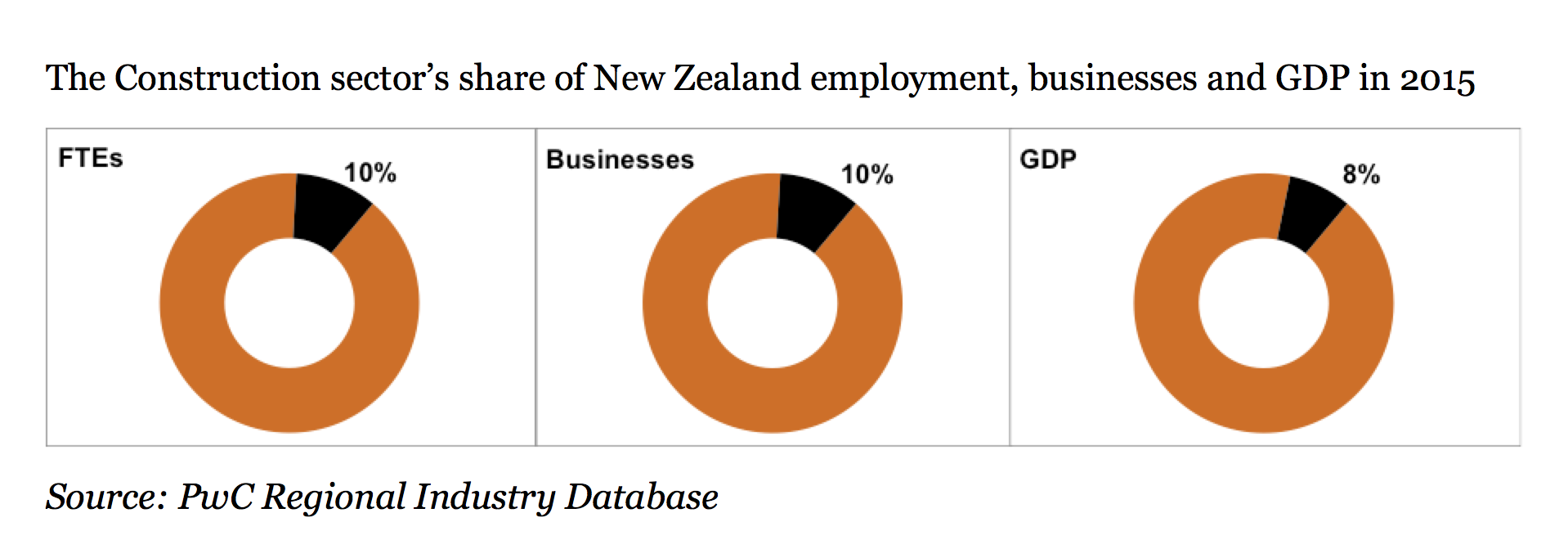
Sector needs better relationship with educators
Geoff Hunt, Chair of the Construction Strategy Group that co-commissioned the report, said that the construction industry is misunderstood within schools, making it difficult to attract people to careers within the industry.
“The scope of the industry isn’t well understood. Job opportunities exist for architects, project managers, engineers, quantity surveyors, carpenters, plumbers, plant operators, etc. A survey in Auckland identified that around 31,000 new entrant jobs would be created in construction in the next five years and about a third of those will require university qualifications or equivalent,” Mr Hunt said.
“I think something like organising site visits for year nine and ten students would be a great idea, because it would highlight to those kids what the jobs on offer look like.
Another question the industry needs to answer is how do we build the cost of training tomorrow’s workforce into today’s jobs?”
Mr Hunt said that he was encouraged to hear that, this year, the Auckland University of Technology will turn out its first class of construction management graduates.
“What tends to happen is that the industry will take graduate engineers or quantity surveyors and try to mould them into construction managers on the job, but they don’t necessarily have all the right skills or training. I’d like to see similar courses to the one offered by AUT taught by more tertiary institutions in New Zealand.”
BCITO Chief Executive Warwick Quinn agrees, highlighting one of the biggest challenges as being the prejudice facing the trades from key influencers of school leavers who favour them going to university.
“This pressure comes from parents, schools, career advisers and others. It’s a bias that has been in the making for the best part of 30 years (if not longer). Positioning the trades as a genuine career option is really important, along with building strong employer connections with schools in local communities,” Mr Quinn said.
“BCITO is running quite an extensive marketing campaign to help address the bias issue and works a lot in schools. We are looking to strengthen that relationship further and not only connect with school leavers, but also those still in schools interested in a career in the trades. If we can do that well, we have a much better chance to build those early relationships with local employers.”
Volatility hurts recruitment and retention
Hunt and Quinn both said that the boom and bust nature of the industry acted as a deterrent to smaller firms – which make up more than 90% of New Zealand’s construction industry – taking on apprentices and investing in their training.
“During the boom times we chase potential apprentices and during a bust we chase employers. The best way to manage the shortfall is to not fall behind the number of people we need in training in the first place,” Mr Quinn said.
“Our battle is not so much finding enough skills during the boom times, but retaining sufficient skills during the bust.
“This is when we see apprentice numbers collapse, which means we start well behind the eight ball when the market eventually rebounds, which is what we’re experiencing now.”
He said a number of factors needed to be considered as part of the solution, including equipping construction companies with better business skills to improve their understanding of the economy and how a business should respond to its high and lows, as well as changing the view of training from a cost to an investment.
“Training and qualifications also need to be more aligned to how the sector is structured, so that training is directly related to the job being undertaken. The sector should send strong signals that training is valued and purchasers of construction services, including principal contractors, insist on hiring firms that employ a certain number of trainees.”
He also said that there was an opportunity for the government to step in.
“It could offer builders who are training apprentices some form of financial incentive. It could also encourage better labour force planning by having a dedicated policy unit monitoring the labour market’s demands and using whatever levers it has to encourage skills development during a down turn, to avoid capacity and capability problems when the market eventually recovers.”
Mr Hunt said that he would like to see the government better plan the rollout of its large-scale projects.
“Rather than coming to the market with work during a boom time, the government could delay or bring forward projects so that they fall during a bust, which would help to smooth out the troughs.”
He said it would also give industry players more confidence to invest in both training and productivity increasing measures.
Register to earn LBP Points Sign in


